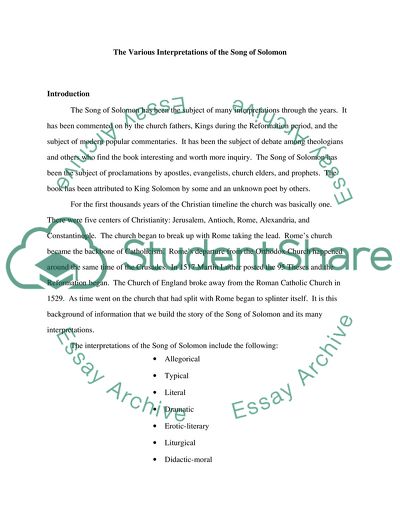Cite this document
(The Various Interpretations of the Song of Solomon Book Report/Review, n.d.)
The Various Interpretations of the Song of Solomon Book Report/Review. https://studentshare.org/religion-and-theology/1709375-the-various-interpretations-of-the-song-of-solmom
The Various Interpretations of the Song of Solomon Book Report/Review. https://studentshare.org/religion-and-theology/1709375-the-various-interpretations-of-the-song-of-solmom
(The Various Interpretations of the Song of Solomon Book Report/Review)
The Various Interpretations of the Song of Solomon Book Report/Review. https://studentshare.org/religion-and-theology/1709375-the-various-interpretations-of-the-song-of-solmom.
The Various Interpretations of the Song of Solomon Book Report/Review. https://studentshare.org/religion-and-theology/1709375-the-various-interpretations-of-the-song-of-solmom.
“The Various Interpretations of the Song of Solomon Book Report/Review”. https://studentshare.org/religion-and-theology/1709375-the-various-interpretations-of-the-song-of-solmom.


